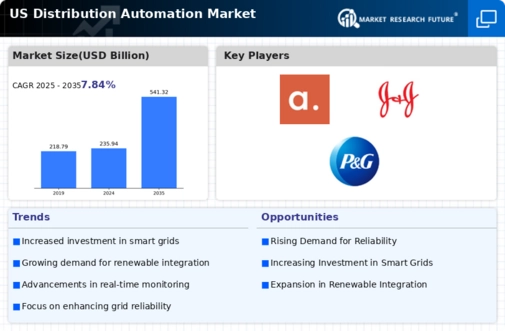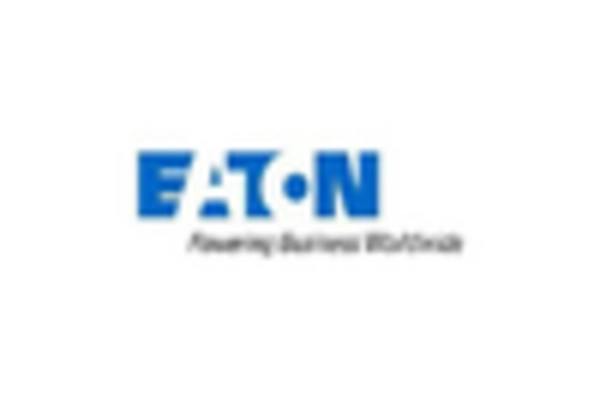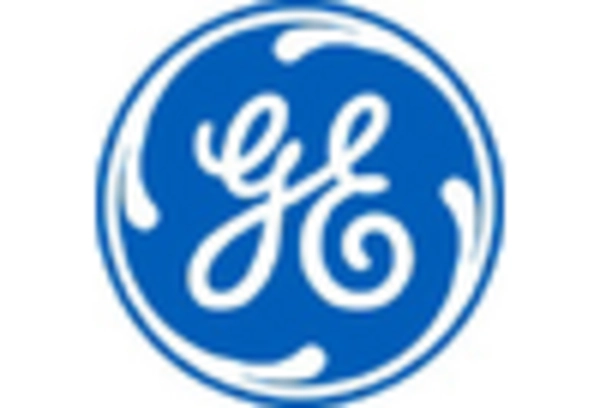Rising Demand for Energy Efficiency
The distribution automation market is experiencing a notable surge in demand for energy efficiency solutions. As energy costs continue to rise, utilities and consumers alike are seeking ways to optimize energy consumption. This trend is driven by regulatory mandates and consumer preferences for sustainable practices. In the US, energy efficiency programs have been shown to reduce energy consumption by up to 20%, which directly impacts the distribution automation market. Utilities are increasingly investing in automation technologies to enhance grid reliability and reduce operational costs. The integration of advanced metering infrastructure and real-time monitoring systems is becoming essential for utilities aiming to meet these efficiency goals. Consequently, the distribution automation market is likely to expand as stakeholders prioritize energy-saving initiatives.
Growing Focus on Data Analytics and Management
The distribution automation market is witnessing a growing focus on data analytics and management. Utilities are increasingly recognizing the value of data generated from smart meters and sensors. This data can provide insights into consumption patterns, system performance, and potential outages. By leveraging advanced analytics, utilities can optimize their operations and enhance decision-making processes. The market for data analytics solutions in the distribution automation sector is projected to grow substantially, as utilities seek to harness this information for improved efficiency and reliability. The integration of data management systems is likely to play a crucial role in shaping the future of the distribution automation market.
Regulatory Support for Automation Technologies
The distribution automation market is significantly influenced by regulatory support for automation technologies. Federal and state policies are increasingly encouraging the adoption of smart grid solutions to enhance grid resilience and reliability. Initiatives such as the Energy Policy Act and various state-level mandates are driving utilities to invest in automation technologies. These regulations often provide financial incentives for utilities to implement advanced distribution automation systems. As a result, the market is expected to grow as utilities align their strategies with regulatory requirements. The emphasis on reducing outages and improving service quality is likely to further propel the adoption of automation technologies within the distribution automation market.
Increased Investment in Infrastructure Modernization
The market is poised for growth due to increased investment in infrastructure modernization. Aging electrical grids in the US are prompting utilities to upgrade their systems to improve reliability and efficiency. According to recent estimates, the US electric grid requires an investment of approximately $4 trillion over the next two decades to meet future demands. This modernization effort includes the deployment of smart grid technologies, which enhance the capabilities of distribution automation systems. Utilities are focusing on replacing outdated equipment and integrating advanced technologies to facilitate better monitoring and control. As a result, the distribution automation market is likely to benefit from this influx of capital aimed at revitalizing the electrical infrastructure.
Emergence of Electric Vehicles and Charging Infrastructure
The distribution automation market is being shaped by the emergence of electric vehicles (EVs) and the corresponding need for charging infrastructure. As the adoption of EVs accelerates in the US, utilities are faced with the challenge of integrating these vehicles into the existing grid. This integration requires advanced distribution automation solutions to manage the increased load and ensure grid stability. The market for EV charging stations is expected to grow significantly, with projections indicating a need for over 1 million charging points by 2030. This demand creates opportunities for distribution automation technologies that can facilitate efficient energy distribution and management. Consequently, the distribution automation market is likely to expand as utilities adapt to the evolving landscape of transportation electrification.

















Leave a Comment